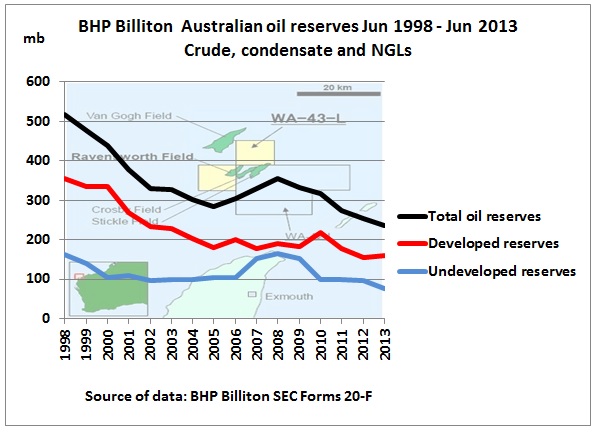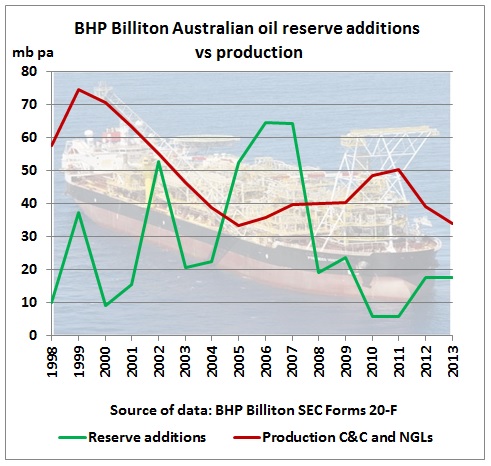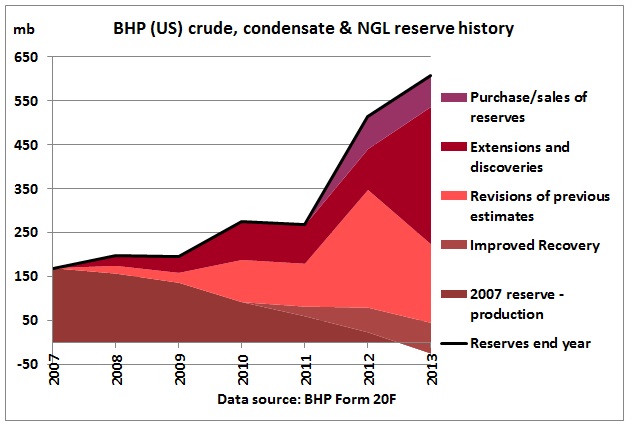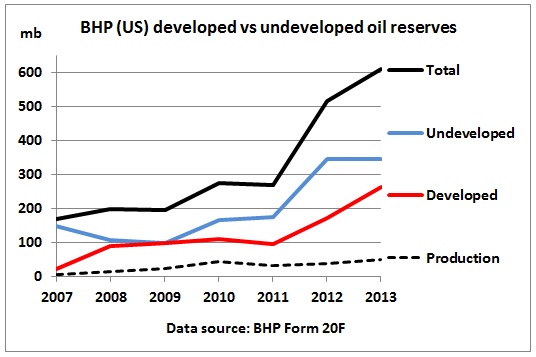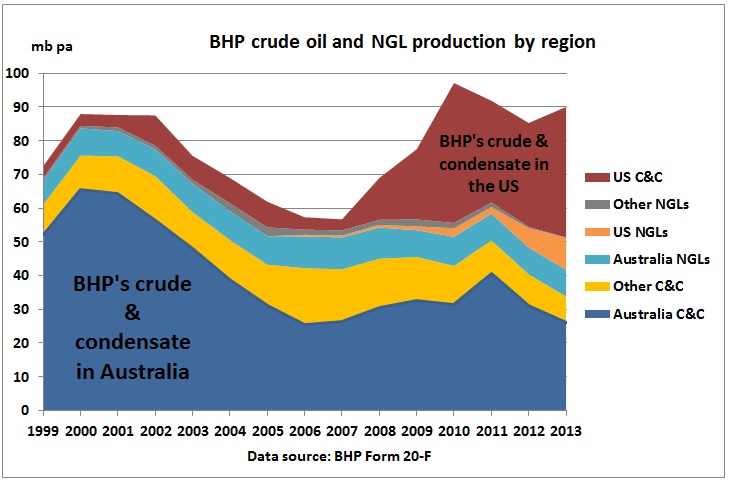At BHP’s recent annual general meeting only 4% of BHP shareholders were interested in climate change issues so how many would think about BHP’s oil reserves and oil production?
22/11/2013
Former Shell executive and Australian Coal Association head Ian Dunlop is believed to have failed in his bid to be elected to BHP Billiton’s board as a ‘climate change candidate’, ABC Online reports.
According to the ABC, Dunlop won about 4 per cent of the vote at the company’s London AGM last month and 3.5 per cent of the proxy ballots in Perth yesterday, with the full vote to be released in coming days.
BHP’s chairman Jac Nasser as well as key shareholder groups had urged shareholders to vote against Mr Dunlop’s nomination.
http://www.businessspectator.com.au/news/2013/11/22/policy-politics/dunlop-fall-short-bhp-board
The AGM’s slide shows
http://www.bhpbilliton.com/home/investors/shareholderinfo/Pages/Meetings.aspx
had no details on oil so let’s have a look at BHP’s oil statistics in their annual reports:
http://www.bhpbilliton.com/home/investors/reports/Pages/default.aspx
BHP’s Australian oil reserves are in long-term decline despite a (short-lived) increase of undeveloped reserves 5 years ago.
Oil production increased after 2005 from the new Stybarrow and Pyrenees fields in the Carnarvon basin but is in decline again after these 2 fields had peaked. Reserve additions are below productions so reserves decline.
Reserve Growth in the US
The graph shows that the equivalent of 2007 reserves would have been completely produced by around 2012. Improved recovery brought the balance back into the positive. Revisions of previous estimates kept reserves basically flat until 2011. A large part of an upward revision in 2012 was undone in 2013 (Mad Dog offshore, shale assets) showing that there can be set-backs. The real growth came from extensions, new discoveries and purchase of reserves from other companies (Eagle Ford shale).
Undeveloped reserves (56% of total) grew faster than developed reserves reflecting a time lag for reserves to come under production. The reserve/production ratio halved from a very high 16% in 2010 to 8% in 2013. This means current reserves would be depleted in 12.5 years at current production levels.
Altogether now
Up to 2011 US reserve growth offset decline elsewhere but in the last 2 years there was a net increase of almost 50%
What it means for production
All that reserve growth in the US brought BHP’s oil production back to where it was in 2000.
Conclusion:
A remarkable roller coaster come-back which needs continuing investments in developing booked reserves to keep production at current levels.
Previous posts:
24/8/2012
BHP Billiton’s Australian oil reserves in long term decline
http://crudeoilpeak.info/bhp-billitons-australian-oil-reserves-in-decline
6/8/2009
Submission BHP Olympic Dam Mine
http://www.olympicdameis.sa.gov.au/html/submissions.cfm
http://www.olympicdameis.sa.gov.au/html/submissions/public/MushalikMatt.pdf

